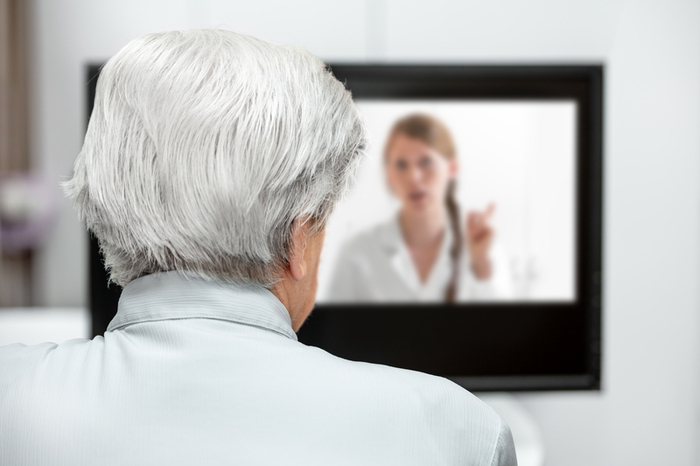- Calls to this hotline are currently being directed to Within Health, Fay or Eating Disorder Solutions
- Representatives are standing by 24/7 to help answer your questions
- All calls are confidential and HIPAA compliant
- There is no obligation or cost to call
- Eating Disorder Hope does not receive any commissions or fees dependent upon which provider you select
- Additional treatment providers are located on our directory or samhsa.gov
AmeriHealth Eating Disorder Coverage
Navigating an eating disorder isn’t easy. And the process is often only made more complicated by the rounds of healthcare hurdles thrown into the mix.
The earlier you begin treatment for conditions like bulimia nervosa, anorexia nervosa, or binge eating disorder, the better your chances of complete recovery. Yet, treatment costs, and the types of treatments made available to you, will likely be affected by your health insurance policy.
If you have AmeriHealth health insurance coverage, you may have questions about how that plan works and how—or whether—it can be used to cover treatment for major eating disorders.
What is AmeriHealth?
Established in 1995, AmeriHealth is a health insurance group, offering a range of different services and healthcare plans for individuals and employers. Some of their most popular types of healthcare plans include:
- Health Maintenance Organization (HMO): HMO plans offer lower costs and primary care physician referrals.
- Preferred Provider Organization (PPO): PPOs have higher premiums but allow members to choose treatment without requiring approval from their primary care physician.
They also offer insurance for individuals with Medicare, third-party administration health plans, and a wide range of behavioral health treatment coverage, including eating disorders.

Does AmeriHealth Cover Eating Disorders?
Whether AmeriHealth will cover eating disorder treatment depends on several factors, including:
- The specific plan you have
- The state you reside in
- The severity of your eating disorder
In general, AmeriHealth offers at least some type of eating disorder coverage. Many types of outpatient treatment, including nutritional counseling and psychotherapy sessions, are likely to be covered. And the company also covers a number of mental health conditions, which may be related to eating disorders.
What Does AmeriHealth Not Cover?
Once again, this answer depends heavily on the specific details of your healthcare plan.
AmeriHealth does not automatically cover inpatient treatment. Instead, you’ll need to speak with your healthcare provider specifically to get a referral for enrollment eligibility for these programs.
Some circumstances, including co-occurring disorders which require a more intensive level of care, may make acceptance into these programs more likely. Still, AmeriHealth may have a limit on the number of inpatient program days it will cover.
AmeriHealth also only covers treatments which it deems to be medically necessary and clinically proven to help. Treatment options that fall outside these definitions may not be covered.
It may be possible to access these resources if you choose not you use an in-network provider. However, in these cases, treatment will likely be much more expensive. Make sure to speak with an AmeriHealth representative before enrolling in any eating disorder treatment programs, to ensure the company will cover the costs.
Treatment Centers Accepting AmeriHealth
There are a wide range of programs and other treatment centers across the country that accept AmeriHealth coverage or at least some of the insurance company’s policies. Tracking down programs can feel overwhelming, but there are some options that may help you narrow down your search.
Do Your Research
Finding the right program can be a difficult task, before even taking healthcare plans into consideration. So, before even looking at which treatment centers accept AmeriHealth policies, you may want to start by looking more generally into the different levels and types of care for eating disorders. This can help you narrow down the type of program that will be most helpful for your individual case.
Some search engines or online tools may also be able to give you the latest information on which eating disorder treatment programs accept which types of insurance. Just make sure any websites you refer to are up-to-date.
You can also discuss the best course of action with your primary care provider or mental health therapist. These professionals can help you understand the severity of your symptoms and make additional recommendations for the type of facility that may be most helpful.
Call AmeriHealth
Once you’ve zeroed in on the treatment program you want, you can speak with an AmeriHealth representative to determine whether the program is in-network. If not, it may be possible to request a third-party referral.
Still, the process allows AmeriHealth to finalize the coverage details, which should help make for an overall smoother process before enrolling in the program.
Contact Your Treatment Center
Instead of contacting AmeriHealth directly, you can also contact the individual treatment programs you’re interested in, to see if they accept your specific healthcare policy.
The administration staff should verify your treatment coverage and give you any additional details, including potential extra costs.
How to Start the Treatment Process with AmeriHealth
Getting started with the treatment process for your eating disorder using AmeriHealth is easy.
Before deciding on a program, consult with your primary care provider to determine which treatment and level of care would be most effective. Your doctor may also need to write you an official diagnosis, in order to start the process. This requirement varies by plan, so make sure to check the details of your policy for more informaiton.
You can then begin treatment with AmeriHealth in a few simple steps:
- Research in-network treatment centers based on your needs and preferences. Consider the facility environment, location, accreditation, and quality of care.
- Present your health insurance ID to the administration of your treatment center. They will contact AmeriHealth to verify your coverage.
- The treatment center will then finalize the details, including cost calculation, depending on how much coverage you have.
- You’ll receive a notification that your insurance has been accepted, along with a projected cost of treatment.
Once all the steps have been followed, you should be allowed to enroll in the program, and begin your journey to recovery.
Types of Eating Disorder Treatment Programs
Every individual suffering from an eating disorder will require a different treatment plan. Symptoms, manageability, triggers, and co-occurring conditions affect how your road to recovery will look.
To accommodate these different needs and concerns, there are several different levels of eating disorder treatment. It may be important to understand these distinctions when researching the type of treatment program you need, and when speaking to AmeriHealth representatives about why that type of care is the best option for you.
Residential/Inpatient Treatment
In severe eating disorder cases, patients need 24/7 care and monitoring to manage their symptoms. Residential programs offer intensive high-level care and require individuals to stay throughout treatment in the facility.
These clinical residences provide patients with a supportive healing environment conducive to eating disorder recovery. Patients generally follow a strict daily schedule, which includes monitored meals, therapy, family visits, and other activities.
Partial Hospitalization Program (PHP)
This program is essentially a step down from a residential or inpatient program. Partial hospitalization programs (PHP) are most effective for individuals whose symptoms have been reduced, but who still need help managing them.
PHPs don’t require overnight stays, though patients are expected to attend sessions between 5-6 days per week, for an average of 7 hours per day. During these sessions, a patient will likely undergo continuing therapy, nutritional counseling, medication checks, and meal supervision.
Outpatient & Intensive Outpatient Programs (IOP)
Once a patient shows more control over their symptoms and symptom management, they can move on to an intensive outpatient program (IOP). This intermediary step holds a patient accountable to several therapy sessions or medical check-ins per week, but these sessions are much shorter than those in a partial hospitalization program.
While participating in an IOP, a patient will have the flexibility to resume some social responsibilities, including school or work, while maintaining regular check-ins with their therapist or care team.
Once a patient demonstrates more control over their condition and feels comfortable resuming a more full social schedule, they can begin outpatient treatment. Generally, these include regular but less-frequent meetings with a therapist, primary care doctor, or nutritional counselor.

Virtual Treatment
Finally, virtual treatment allows individuals to maintain their treatment sessions from the comfort of their own home—or wherever they happen to be. Various apps or online apparatus are used to connect patients with their mental health therapist, nutritional counselor, or doctor, allowing them to conduct their appointments entirely remotely.
Most programs only allow patients undergoing IOP or PHP treatments to participate in virtual treatment. Residential programs are widely seen to be most effective in-person, and the programs require overnight facility stays in order to fully implement their services.
However, for patients receiving less intensive levels of care, virtual treatment has been found to offer the same value and quality of care as in-person programs. Some providers even have an app that provides access to 24/7 clinical contact and treatment progress.
Still, the most important thing to remember is, no matter where you are along your healing journey, help is always possible.
Resources
Clinical Policy Title: Eating and feeding disorder treatment. (2018, July). AmeriHealth. Accessed January 2023.
Published on May 8, 2023 Published on EatingDisorderHope.com

